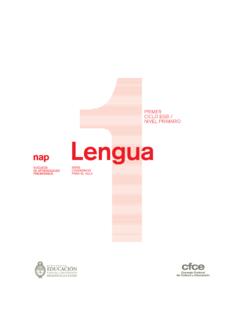Transcription of Age Constraints on Second-Language Acquisition
1 Age Constraints on Second-Language AcquisitionJames Emil FlegeUniversity of Alabama at BirminghamGrace H. Yeni-KomshianUniversity of MarylandandSerena LiuUniversity of Alabama at BirminghamThis study evaluated the critical period hypothesis for second language (L2) Acquisition . Theparticipants were 240 native speakers of Korean who differed according to age of arrival (AOA) inthe United States (1 to 23 years), but were all experienced in English (mean length of residence515 years). The native Korean participants pronunciation of English was evaluated by having listenersrate their sentences for overall degree of foreign accent; knowledge of English morphosyntax wasevaluated using a 144-item grammaticality judgment test.
2 As AOA increased, the foreign accentsgrew stronger, and the grammaticality judgment test scores decreased steadily. However, unlike thecase for the foreign accent ratings, the effect of AOA on the grammaticality judgment test scoresbecame nonsignificant when variables confounded with AOA were controlled. This suggested that theobserved decrease in morphosyntax scores was not the result of passing a maturationally definedcritical period. Additional analyses showed that the score for sentences testing knowledge of rulebased, generalizable aspects of English morphosyntax varied as a function of how much education theKorean participants had received in the United States. The scores for sentences testing lexically basedaspects of English morphosyntax, on the other hand, depended on how much the Koreans usedEnglish.
3 1999 Academic PressKey Words: second language Acquisition ; phonology; morphosyntax; age; critical period; languageuse; studies examining second language (L2) Acquisition have focused on the influenceof age. The age variable examined in L2 studiesis usually the age of first exposure to the targetL2. In studies examining immigrant popula-tions, this is typically indexed by the partici-pants age of arrival (AOA) in the host research has suggested that AOA isapparently an important determinant of overalldegree of foreign accent in the L2 (Flege, Mu-nro, & MacKay, 1995a), as well as degree ofaccuracy in producing particular L2 consonantsand vowels (Flege, Munro, & MacKay, 1995b;Munro, Flege, & MacKay, 1996).
4 Age effectshave also been reported for the learning of En-glish morphosyntax (Johnson & Newport,1989).1 The observation of age effects on the L2 This research was funded by NIDCD Grant authors are indebted to Jackie Johnson, for providingthe grammaticality judgment test sentences, and to DavidBirdsong, for first suggesting the analysis of rule versuslexically based grammaticality judgment test items. The aregrateful to E. Bialystok, D. Birdsong, H. Hakuta, M. Mack,T. Piske, and L. White for commenting on earlier drafts ofthis article, as well as the following University of Marylandstudents: S. Kim and R. Byun (for help collecting data), and E. Kim (for their help preparing stimuli and testinglisteners), and M.
5 Cullen, L. Yun, A. Kinn, C. Romero, andM. Robbins (for help with data management).Editorial correspondence and reprint requests should beaddressed to J. E. Flege, Department of Rehabilitation Sci-ences, University of Alabama at Birmingham, VH 503,Birmingham, Alabama 35294. E-mail: age effects have been also been obtained in780749-596X/99 $ 1999 by Academic PressAll rights of reproduction in any form of Memory and Language41,78 104 (1999)Article ID , available online at onperformance of adults even those who are ex-perienced in their L2 has suggested to someresearchers that the ability to acquire an L2effectively is limited by a critical period. Such aconclusion is important practically, inasmuch asit might influence decisions regarding educa-tional policy.
6 It is also important critical period hypothesis rests on theassumption that the age-related effects seen inL2 studies are the result of maturational changesin brain structures that are used to learn and/orto process language . For example, it has beenhypothesized that as the brain matures, it be-comes less plastic and that lost neural plas-ticity impedes L2 learning ( , Scovel, 1988;Patkowski, 1980, 1990). However, others haveproposed that age-related changes in L2 perfor-mance derive from the nature and extent of theinteraction between a bilingual s two languagesystems ( , Oyama, 1979; Flege, 1987, 1988,1995, 1998b; Bialystok, 1997). This latter ap-proach treats age as an index of the state ofdevelopment of the L1 system.
7 It assumes im-plicitly that, all else being equal, the more fullydeveloped the L1 system is when L2 learningbegins, the more strongly the L1 will influencethe between maturational and interac-tive accounts of age-related effects on L2 per-formance is difficult. Neural development andnative language Acquisition are inextricablyconfounded through much of childhood (Bates& Goodman, 1998). Also, the most commonindex of age in L2 studies, AOA, is typicallyconfounded with other variables that may influ-ence L2 performance (see Flege, 1987 and1998a, for discussions). Still another difficultyis that there is no consensus as to how one mighttest the critical period hypothesis. This is be-cause the critical period hypothesis has beenapplied with less specificity to the study ofage-related changes in L2 performance than ithas been applied in ethological studies examin-ing, for example, imprinting behavior in birds(Bornstein, 1989).
8 The lack of specificity ismost crucial with respect to a definition of thestructures and/or functions that are putativelyaltered as the brain matures (Bialystok, 1997).For example, those who claim that foreign ac-cents arise due to the passing of a critical perioddo not specify whether the age-related changesarise from a loss of ability to articulate L2speech sounds, a loss of ability to auditorilydistinguish L2 from L1 sounds or to form per-ceptual representations for L2 sounds in long-term memory, or a loss of ability to translatesuch representations into articulatory gestures(see Flege, 1987, 1988, 1995, for discussion).The aim of this study was to evaluate thecritical period hypothesis by examining the ef-fect of AOA on L2 performance.
9 Three methodswere used to evaluate the critical period hypoth-esis. The first method will be called the dis-continuity test. The discontinuity test rests onthe assumption that, in an AOA-stratified sam-ple of L2 learners, participants who beganlearning the L2 before the critical period willperform markedly better than those who beganlearning their L2 after the end of the criticalperiod. The effect of a critical period could,therefore, be demonstrated by showing a signif-icant departure from linearity in functions relat-ing measures of L2 performance to AOA at anappropriate present study was well suited for thediscontinuity test. The 240 native speakers ofKorean who participated had arrived in theUnited States between the ages of 1 and 23years and had lived there for at least 8 years(mean515 years).
10 2 Previous work has shownthat as AOA increases, native speakers of Ko-rean make more errors writing down computer-generated English sentences (Bott, 1993), re-spond more slowly and less accurately to alexical decision task (Kim, 1996), and makemore errors on a grammaticality judgment test(Shim, 1995). Finally, Koreans who learn En-glish in adulthood are known to have difficultystudies which have examined the Acquisition of AmericanSign language ( , Newport, 1990; Mayberry & Eichen,1991; Emmorey, Bellugi, Friederici, & Horn, 1995).2 The participants were selected on the basis of AOArather than the age at which they first began to study Englishat school in Korea. This is because, of the two variables,AOA is the more potent predictor of L2 performance ( ,Johnson & Newport, 1989).






